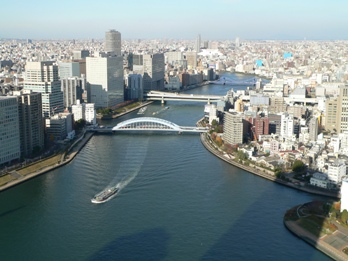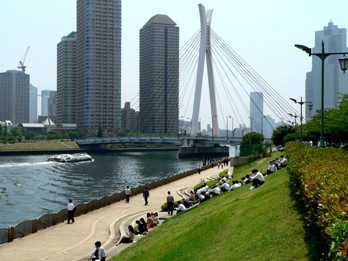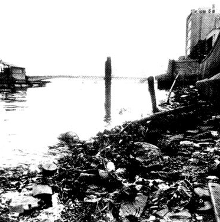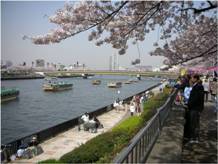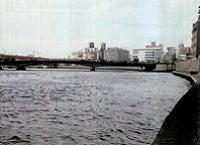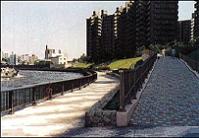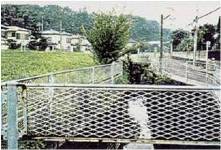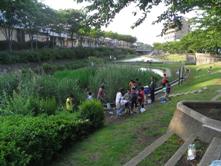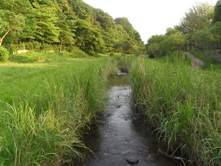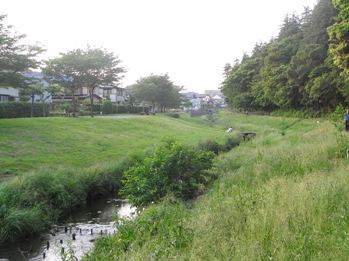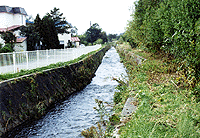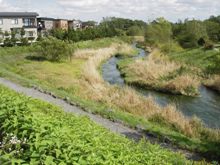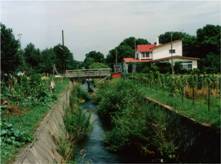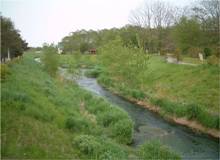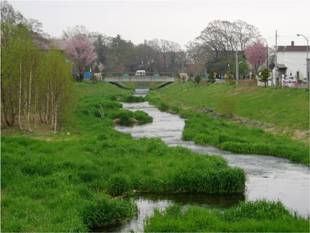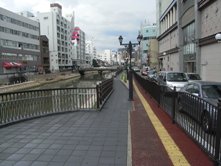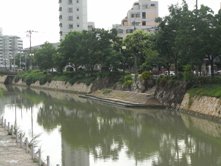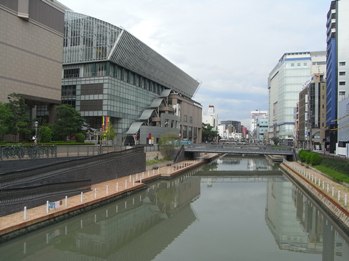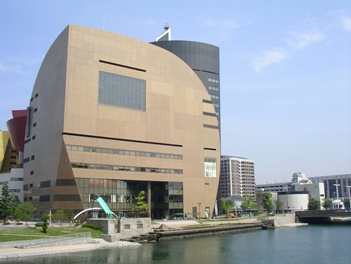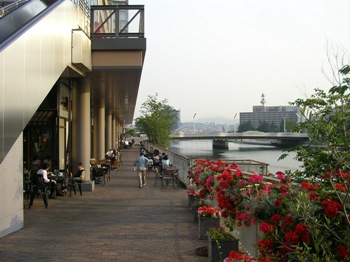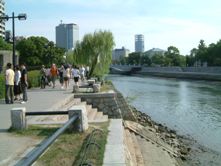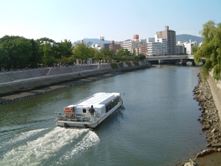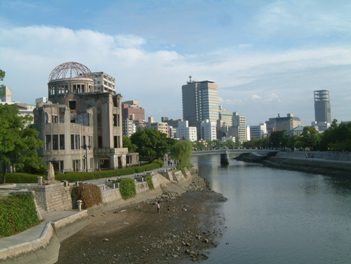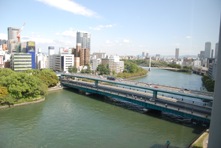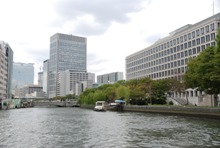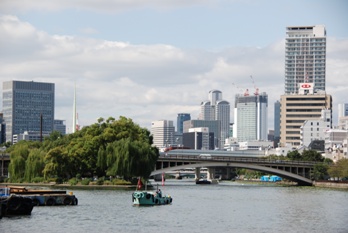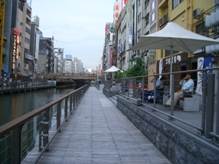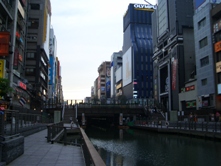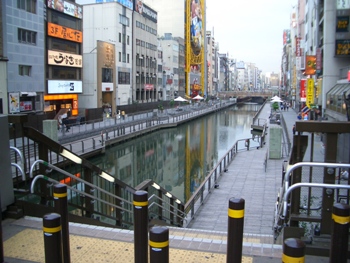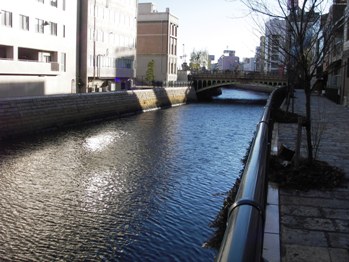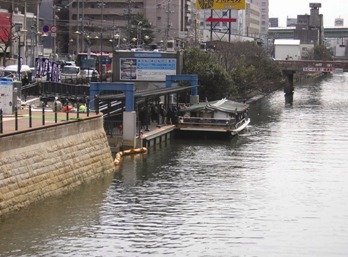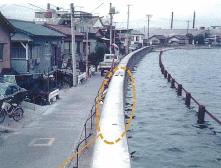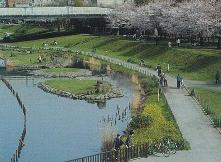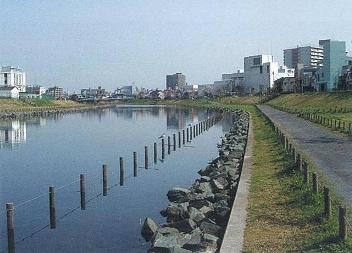
< World's WATERFRONT:JAPAN Category: Community and urban river restoration >
|
Current condition (Source: source: Tokyo Metropolitan Gov.)
|
Sumida River around 1967
(source: Tokyo Metropolitan Gov.)
|
|
Current condition
(source: Tokyo Metropolitan Gov.)
|
Before
(source: Tokyo Metropolitan Gov.)
|
|
After
(source: Tokyo Metropolitan Gov.)
|
Postwar Sumida River waterfront was occupied by factories and warehouses, was deteriorated like a ditch, and was shunned by people. At the same time, industrial and logistical structure changes sap the area’s vitality as a production base. But increasing interest in environment headed for the semi-ruined city waterfront and a possibility of its restoration emerged and city-and-river development started, thus attractive urban area was gradually created.
The water quality of Sumida river was remarkably low in 1950s because of the industrial/domestic wastewater generated from rapid industry development and urbanization. However, after the Olympics held in Tokyo in 1964, the water quality was significantly improved by popularization of sewage water treatment system and more stricted restrictions.
Sumida river is characterized by 1) general river slope which promotes stagnant area 2) large effect of sea water that goes upstream 3) 60% of river water is treated sewage water. Therefore, efforts are being made to improve the water quality by modifying sewer system and introducing advanced waste water treatment.
In Asian nations with worsening river environments, Sumida River, improving after experiencing 50-year deterioration is a leading example in Asia.
>>More details, “River Rehabilitation with a focus on the Sumida River”(ARRN 4th International Forum held in 2007)
>>More details (PDF 50KB)
By JRRN-secre | Category: Community and urban river restoration,Kanto | Comment(0) | Trackback(0) |
Date: 2012.03.31 18:34
|
Before Restoration Project
|
|
Photo by Michiya Tannai, May 2008
|
Izumi River flowing north and south longitudinally in Seya and Izumi Wards of Yokohama City is positioned as an important river in Yokohama’s river environment improvement project called the “Community River Improvement project.”
In the first half of the ’90s, basic research related to animals and plants in watershed areas of Izumi River was conducted for preparation of river restoration and scenery and a land utilization program was launched while preserving biological resources.
Today, Izumi River attracts a great deal of attention from people engaged in river restoration work as a good case example of reproducing diversity of the river from the viewpoint of the waterfront ecological system and landscape and river utilization by citizens although it is an urban river. In 2005, this project won the highest design award of the Japan Society of Civil Engineers’ Design Prize.
By JRRN-secre | Category: Community and urban river restoration,Kanto | Comment(0) | Trackback(0) |
Date: 2012.03.30 16:19
Before
(source: RFC)
|
|
After
(source: RFC)
|
|
Before restoration project
|
|
7 years after project (Upper reaches)
|
7 years after project (Middle reaches)
(source: Iwao Araseki)
|
Moizari River, a tributary stream of Izari River in Eniwa City, used to be a rich creek where salmon spawned. The river improvement construction was done from the 1950s straightening the river course and using the triple-phase method to keep the nearby farms away from floods, but the succeeding rapid city development lowered the flood control safety level. In 1986 the river improvement was restarted, which was certified in 1990 as the second “Hometown river model project” in Hokkaido. Various nature-based methods were introduced with the theme of “waterfront with no makeup,” integrating the river with nature and greenery. River-walk has also been prepared as a part of human-nature symbiotic city development.
>>More details (PDF 112KB)
By JRRN-secre | Category: Community and urban river restoration,Hokkaido | Comment(0) | Trackback(0) |
Date: 2012.03.29 18:12
|
Photo by Michiya Tannai, Aug. 2008
|
Hakata River running through Hakata and Tenjin districts at the center of Fukuoka City gave off a terrible smell and gas in the past due to deteriorated water quality as it was a tidal river without flow. Therefore, reclamation was discussed from time to time. In 1990, Fukuoka City developed the “Hakata River Dream Corridor Project” (“Hakata River Improvement Concept”), and this environmental improvement (including waterfront improvement) project has been promoted while urban area redevelopment project is conducted in addition to river environment improvement.
By JRRN-secre | Category: Community and urban river restoration,Kyushu | Comment(0) | Trackback(0) |
Date: 2012.01.05 16:18
|
Photo by Norio Nagai, May. 2008
|
Murasaki River flowing through the inner-city area of Kitakyushu City was listed as a “My Town, My River Improvement Project (A Waterfront Plan project)” river in 1988. Since then, urban infrastructure improvement including river and surrounding urban development has been conducted. In the Murasaki River Bashaku district, various approaches are adopted, which include not only flood control projects but also waterfront park and road improvement and urban district vitalization to enhance private developers’ potentiality to create a town centering on the river.
By JRRN-secre | Category: Community and urban river restoration,Kyushu | Comment(0) | Trackback(0) |
Date: 2012.01.05 16:18
|
Photo by Yumi Imanishi, Sep.. 2007
|
For Ota River flowing though Hiroshima City, the national, prefectural, and city governments together developed a framework called “A Lagoon City of Hiroshima” in January 2003 to take progressive approaches toward the regeneration of a lagoon city in the green river area expanded in the postwar period. In this framework, three pillars of “to use,” “to create,” and “to connect” are provided to take the lead in social experiments in waterfront utilization and conduct waterfront restoration activities with the collaboration of citizens, companies, and government.
By JRRN-secre | Category: Community and urban river restoration,Chugoku | Comment(0) | Trackback(0) |
Date: 2012.01.05 16:17
|
Photo by Akira WADA, Oct.. 2007
|
Along Oh River (previously called Yodo River), improvement of city parks, water bank protection, and docks has been carried out toward the creation of an urban environment having an affinity for water. In Osaka Amenity Park, in particular, a waterfront space appropriate to the lagoon city of Osaka is provided based on the concept of “creation of a complex city space well equipped with amenities and full of water, greenery, and light.”
By JRRN-secre | Category: Community and urban river restoration,Kinki | Comment(0) | Trackback(0) |
Date: 2012.01.05 16:16
|
Photo by Masafumi Ito, June 2006
|
For Dotonbori River or the river representing Osaka, the walking trail has been improved as part of a project to regenerate “the lagoon city of Osaka,” by which people can feel familiar with water. By improving the flood gates that have the functions of water purification, tide prevention, and lockage, waterfront environmental improvement in the peripheral areas has been achieved.
By JRRN-secre | Category: Community and urban river restoration,Kinki | Comment(0) | Trackback(0) |
Date: 2012.01.05 16:15
|
Photo by Susumu Domon, Jan. 2006
|
|
Source: RIVER FRONT vol.54
|
Regarding Hori River flowing north to south through the center of Nagoya City, there were industrial areas consisting of many factories and warehouses along the river and urban areas full of commercial facilities and residences built with their backs to Hori River. Additionally, the water quality was very deteriorated, which led to diminishment of the vibrant atmosphere. In this situation, a movement to regenerate Hori River, or the mother river of Nagoya, flourished and the river was listed as a “My Town, My River Improvement Project (A Waterfront Plan project)” river in June 1988. Since then, the Hori River restoration project has been conducted by the Nagoya City government and the local citizens.
By JRRN-secre | Category: Community and urban river restoration,Chubu | Comment(0) | Trackback(0) |
Date: 2012.01.05 16:14
|
Before restoration (1960’s)
|
|
After restoration
|
After restoration
Source: Sep. 2006 Tokyo Metoropolitan Govt.
|
In watershed areas of the Old Naka River, because the surrounding ground is low, a river development project has been conducted to lower the water level to prevent flooding. Together with this project, highly water-attracting, beautiful waterfront spaces have been regenerated without damaging the river environment.
By JRRN-secre | Category: Community and urban river restoration,Kanto | Comment(0) | Trackback(0) |
Date: 2012.01.05 16:13
| Next >>
